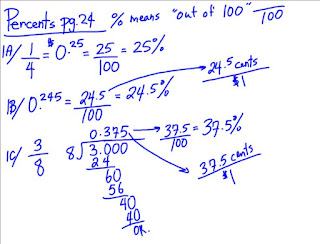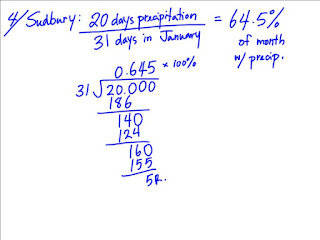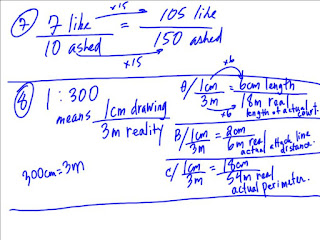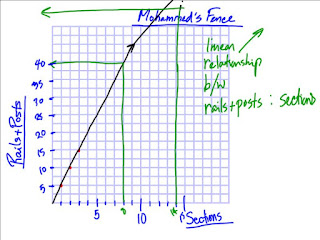Principles of Math: Percents corrections (prepare yourself for a Socrative quiz Monday)
gr7

Friday, 4 December 2015
Tuesday, 1 December 2015
Dec 1
Math: Rates, Ratio, Proportion, Equivalents
Work little by little each day on handout concerning Geography Movement and Language Book Talk tasks. Your goal is to complete them before upcoming holidays.
Wednesday, 25 November 2015
Nov 25
Math:
complete rates pg.21 following this format:
complete rates pg.21 following this format:
You also need to complete fuel consumption for a car of your choice, using Jaguar F-Type handout as your reference and submit by Friday.
As per our discussion,
- care about completing math homework daily - practice will result in success and ease your transition to high school where work load is much greater.
- do not leave blanks, motivate yourself to be a problem-solver
- ask for help and use limitless online resources i.e. webmath.com
- keep your math handouts organized in your binder, do not throw them away, we will revisit and continue practicing these concepts throughout the year
Science:
Begin working on Lab 6 solubility of solute (drink crystals) in solvent (100ml 1/4 cup of water) using write-up prompts provided.
Geography:
Wrap-up your 2 Vaughan communities and submit.
Language:
If you have not submitted your Little Prince reading responses up to the geographer, please do so.
Chps.16-18 reading responses:
- Both the Snake and the Desert Rose tell the Little Prince that "it's lonely among men" and that "people blow about because they have no roots". What point do you think they are trying to make and how does this tie in with what Amir said in Seedfolks?
- What point is the Fox trying to make about "taming" and "establishing ties"?
- Why is it that "what is essential is invisible to the eye" - What do you think is important?
Thursday, 19 November 2015
Nov 19
- continue working on Geography communities of Vaughan
- continue revising/editting Little Prince reading responses up to Geographer - all due Nov.23
Wednesday, 18 November 2015
Nov18
Geography:
reread handout and begin thinking of 2 Vaughan communities to explore
Math:
complete multiplication, division, subtraction, addition handout plus linear relationships take-home task. follow example below:
reread handout and begin thinking of 2 Vaughan communities to explore
Math:
complete multiplication, division, subtraction, addition handout plus linear relationships take-home task. follow example below:
Language:
Revise & edit reading responses to Conceited Man, Drunkard, Businessman, Lamplighter and Geographer, now that we have discussed them in detail. Your guiding question remains "what can I learn from this and apply in life?" Your responses need to be a solid, thoughtful paragraph expressing your personal opinions. 1 sentence does not cut it.
Tuesday, 10 November 2015
Nov 10
Science
Lab 5: Solutes vs Solvents Pg.41 Try This
Context:
·
A solute is the smaller part of a solution.
·
A solvent is the larger part of a solution.
·
A solvent (i.e. water) dissolves a solute
(i.e. salt) forming a solution – in this case, brine.
·
Water is the ultimate solvent since it’s able
to dissolve, dilute and absorb a variety of substances, including contaminants.
·
Air also has the capability of absorbing and
carrying contaminants like car and industrial emissions.
Purpose:
This experiment will compare
how sugar (solute) dissolves in 3 different liquids (solvents) namely: water,
rubbing alcohol, and oil.
Hypothesis:
If I stir sugar in a glass
of water, then I think… because…
If I stir sugar in a glass
of rubbing alcohol, then I think… because…
If I stir sugar in a glass
of oil, then I think… because…
Observations:
Procedure
|
What
I see happening
|
Time
elapsed
|
Sugar
stirred in water
|
||
Sugar
stirred in rubbing alcohol
|
||
Sugar
stirred in oil
|
Analysis:
The sugar particles were strongly
attracted/repelled by the water particles.
The sugar particles were
strongly attracted/repelled by the rubbing alcohol particles.
The sugar particles were
strongly attracted/repelled by the oil particles.
Conclusion:
What did you learn about the
solubility of solutes in solvents?
Math: Linear Relationships
Monday, 9 November 2015
Nov 9
Science:
A solute is the small part of a solution. A solvent is the large part of a solution. A solute dissolves into a solvent to form a solution. When you dissolve sugar into a cup of hot coffee, the sugar is the solute and the coffee is the solvent, since it does the dissolving.
A solute is the small part of a solution. A solvent is the large part of a solution. A solute dissolves into a solvent to form a solution. When you dissolve sugar into a cup of hot coffee, the sugar is the solute and the coffee is the solvent, since it does the dissolving.
Water is the ultimate solvent. It can dissolve, dilute and absorb all types
of solutes.
Salt (solute) + water (solvent) = brine (salty liquid
solution used for preserving/pickling)
Air freshener (solute) chemical fragrance + air (solvent)
= gas
Melted copper + melted zinc = when cooled form brass
(solid alloy) heat is the solvent
Contaminants (solutes) that enter our bodies of water
(solvent) cause pollution, for example, household sewage (solute) enters Lake
Ontario (solvent) or industrial waste (solute) is dumped into Lake Ontario
(solvent).
In a mixture the parts may be unevenly distributed
(heterogeneous) whereas in a solution the solvent has dissolved the solute
making everything look uniform (homogeneous).
Although, some solutes dissolve better and faster in certain types of
solvents. i.e. sugar dissolves in water
but not in oil.
In a soft drink, the solvent is water; the solutes
include sugars, flavour, carbon dioxide gas for bubbles.
In cow’s milk, the solvent is water; the solutes include
proteins, vitamins, fats and sugars.
In air, the solvent is oxygen + nitrogen; the solutes
include contaminants (car emissions, factory emissions)
Begin write up (context, purpose, hypothesis) for Try This text pg. 41
______________________________________
Reading Response: Little Prince chps 5-8
Math: Relationships
_____________________________________
______________________________________
Reading Response: Little Prince chps 5-8
- What do you think the baobabs represent?
- Why do you think we are asked not to neglect them and let them become out of control?
- What point was Prince trying to desperately make Pilot understand about the importance of and admiration for his flower?
- How did the Rose's vanity, her need for constant attention and perfectionism end up putting a strain on the Prince's relationship with her? What can a simple misunderstanding cause?
Math: Relationships
_____________________________________
Subscribe to:
Posts (Atom)




















































